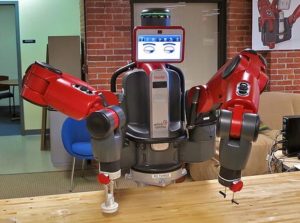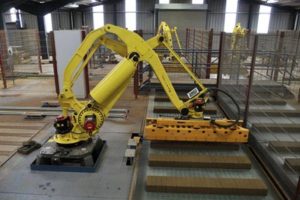Collaborative Robots are Making Automation Possible for SMEs (Part 1)
Blog: Apriso Blog
This is the first of a 2-part series addressing the impact of adopting collaborative robots in the SME manufacturing environment.
Although there is a lot of hype about robots taking jobs away from humans, the truth is today many industries still rely on human processes. According to the Boston Consulting Group, only 10% of tasks were performed by robots in 2015 across all manufacturing industries[1]. However, they expect this share of tasks to increase to 25% by 2025.
How will this happen? This will have to come from the largest sector of the manufacturing base: the small and midsized enterprises (SMEs)[2]. And, the enabler will be so-called collaborative robots, which fit the needs of SMEs much better than traditional industrial robots. The market for such robots is expected to grow at a Compound Annual Growth rate of 60% over the 2017-2021 period[3], exceeding 1$ billion by 2020 with 40,000 units sold[4].
What are collaborative robots?
As their name indicates, collaborative robots, also called cobots, allow workers to work side-by-side with them, as opposed to traditional robots which must be located in a secured, closed area for safety reasons.

Rethink Robotics’ Baxter, an innovative 2-arms cobot with 7 degrees of freedom per arm. The eyes in the computer screen move in the direction one of its arms is about to take. Photo credit: Steve Jurvetson
Manufacturers of cobots include:
Pioneers such as Universal Robots, a leader in the cobots market, and Rethink Robotics whose innovative Baxter and Sawyer cobots have received a lot of attention.
Established industrial robot makers thathave recently introduced cobots to their catalog. From the big four of Industrial Robots, we have the LBR iiwa from KUKA, the dual-arm YuMi robot from ABB, the HC10 from Yaskama Motoman and the CR-35iA from FANUC (which is based on the existing M20iA/35M robot with added rubber skin and force sensors).
Cobots eliminate the need for costly fences, do not use valuable shop floor space nor reduce access to equipment.
But this alone would not be enough for adoption by SMEs.
Why are cobots a good fit for automation in SMEs?
Human safety
For SMEs that want to embrace automation, worker safety is a major concern.
Power and force-limited cobots are equipped with force sensors that make the robot stop whenever they encounter an obstacle, so that a human feels nothing more than a gentle nudge. Such cobots often carry a low payload[5] and work at a slow speed. They also often have round corners and a soft surface and are even shaped to avoid pinch points[6].
Leave a Comment
You must be logged in to post a comment.








